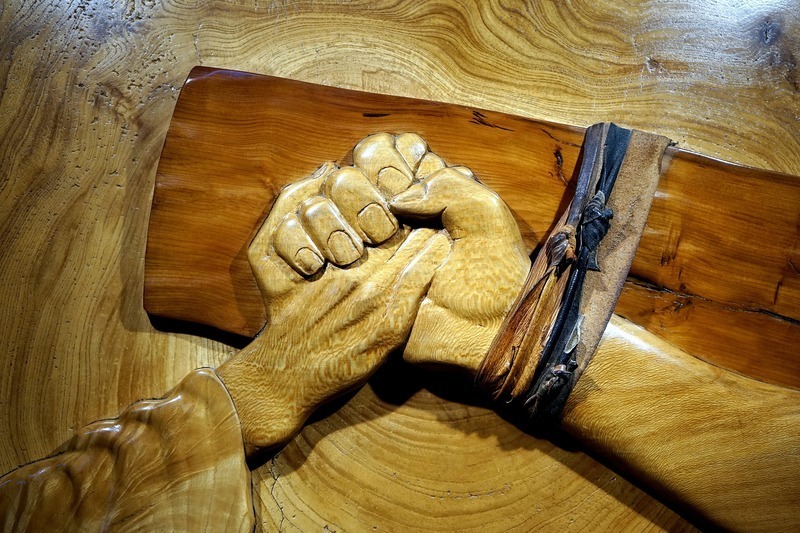
A wooden hand-carved cross that had been missing for years has been acquired by a church in Tumwater that is 150 years old and located in the city's historic downtown. The 13-foot-tall cross now stands in the church's sanctuary, according to St. James Anglican Church's part-time rector Stephen Morrison.
The dedication and blessing of the cross took place at the church on April 8 at 6 p.m., and an Easter service followed at 10 a.m. on April 9. The massive crucifix weighing several hundred pounds was produced by American liturgical artist Ernst Schwidder in 1976. He was born in St. Louis in 1931 and studied in the 1950s at the University of Washington before taking a position as dean of the arts at Valparaiso University in Indiana.
Long-Lost Wooden Carved Cross Found and Restored
According to the story in The News Tribune, Ernst Schwidder moved back to the Northwest to continue his work as a religious artist and teacher. St. David's Church in Hoquiam initially received the cross as a gift, but the church was forced to close shortly afterwards. The cross was then kept for about 20 years on the top of a shed on the church's property. The cross was eventually demolished, and the outbuilding was sold.
All of the internet accounts of Schwidder's labor indicate that the cross is missing because the congregation broke apart and the individual in charge of it disappeared. Marlene Taylor was able to find it, though. Before it was hidden, Taylor exchanged vows to her partner in front of the cross in 1982. The couple traversed the globe together; Taylor's spouse was a Navy officer. Eventually, they made a choice to go home, settling in Shelton.
Yahoo News also shared that after an extended period of time, Taylor got acquainted with a Shelton man who used to go to the Hoquiam church as a member of the congregation. He had the cross in a shed for storage, but the cross's condition has been harmed by years of inactivity and exposure to the weather.
When Taylor learned where the cross was, she contacted Morrison because she knew a carpenter who also served as a pastor. The cross had split and chipped wood and begun to decay. Even worse, someone had painted the cross with "battleship paint," as described by Morrison, which was difficult to remove with any paint thinner or remover.
Also Read: Pope Francis Honors Greece's Cultural Heritage: Returns Three Parthenon Fragments to Athens
The Restoration of the Cross
Morrison felt motivated to work on the cross even though he was not an expert in restoration and needed to gain prior expertise in working with wood. According to the Olympian, Morrison made a few minor adjustments to the cross over the course of about a year to preserve its original beauty and ensure its sturdiness. According to Taylor, the cross has been positioned on sawhorses in the church's common hall for months.
Before the church decided to keep the cross, Morrison contacted museums, including one hosting a display of Schwidder's work at Valparaiso University, to see if they would be interested in acquiring it. Morrison pointed out that the shipping cost was too high because of its size.
The ideal lighting for highlighting the cross in the sanctuary must be determined as the last phase in accepting the cross. When the lighting was put in, Morrison recognized the cross was the ideal fit for the area, as if it had always been there. At first, he was worried that it would look overpowering or bright.
Related Article:Wooden Statues of Virgin Mary Damaged By Fire on Three Separate Incidents at the Start of Holy Week


















